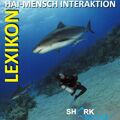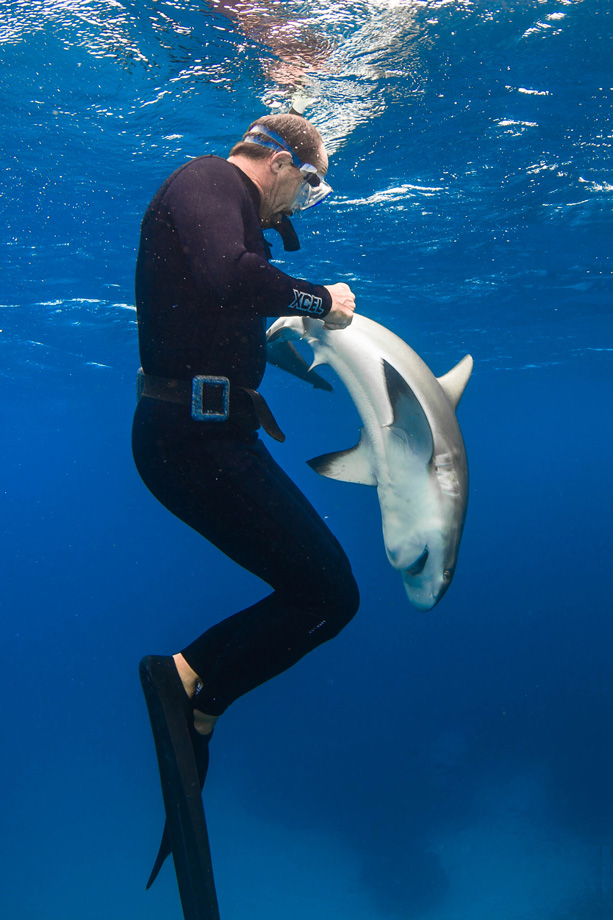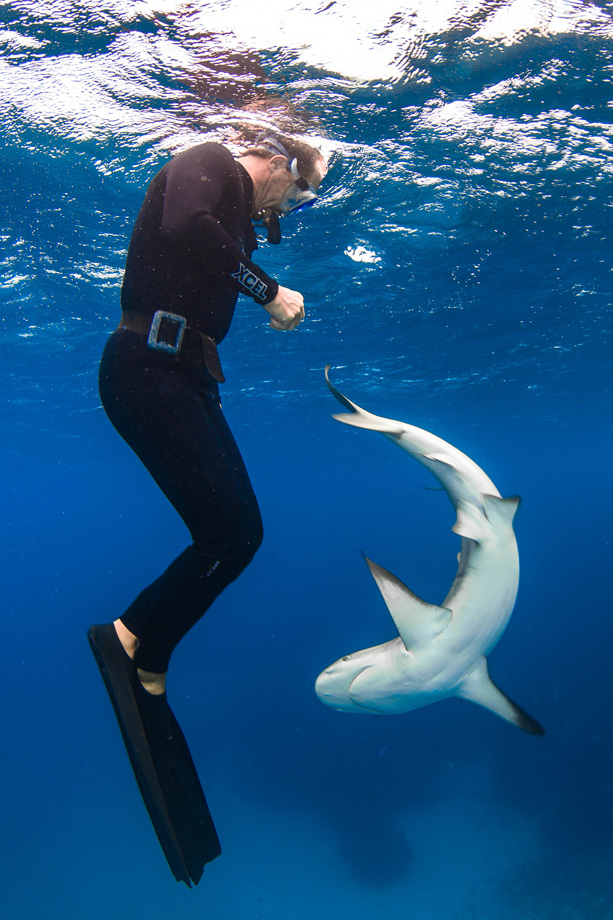Courses Rescue Professionals
Act, React & Rescue
This course has been specially designed for lifeguards, coast guards and other sea watch personnel.
Lectures (flexible duration depending on focal points), weekend (Friday to Sunday) to full week workshops
• Detailed introduction to the analysis and reconstruction of shark bites
• Introduction to “Constellation of factors”
• Rescue procedures for all in water activities (mostly 1 activity/day)
!!! Rules When Rescuing a Victim !!!
Rule: Deal with the shark before attending the victim*.
Reason: A shark’s curiosity over the victim might still be increased, even if it did not bite a second time. Any attempt to rescue the victim can trigger another response from the shark, and the rescuer’s initial task is to secure the situation.
*It is understood that a person might be drowning and immediate help is needed, but most bites are less severe; hence such is instead the exception to the rule. In these rather rare occasions, a rescuer must deal with a victim while keep facing the shark.
Rule: Is a shark still swimming in closest vicinity to the victim during a rescue attempt, avoid anything that might trigger competing over the victim.
Reason: Despite that a shark does not see anything eatable in a person it just bit, there is the possibility that the sudden appearance of another person—together with the attempt to remove the victim—might trigger a “claim response.” A claim response could reflect an establishing of ownership based on initial appearance and exploration; hence a rescue attempt should not commence until the situation with a shark is under control. In its worst form, a claim response ends up in a tug-of-war between the rescuer and the shark with the victim in between.
Rule: Approach a victim from behind and then first evaluate the situation.
Reason: A stressed victim can grab you and pull you down, adding problems to the task ahead. If grabbed by a victim, submerge, and move away.
Rule: Move in front of the victim should a shark approach again.
Reason: The attempt of biting a victim for a second time is statistically more than just minimal (except e.g., if a claim response is triggered), but a rescuer must still be capable of fending off the approaching shark hence must position himself/herself in front of the victim (in relation to the shark’s position), and follow the interception and confrontation rules. Although moving a victim from the site can trigger a competitive behavior in a shark, a situation will not escalate as long as the rescuer remains focused and immediately ceases moving the victim when the shark is turning towards the rescuer/victim again (see following rules as well).
Rule: Never move a victim when a shark is approaching.
Reason: Always assume that a shark is still interested in a victim, and the removing of the person, while the animal comes closer, could increase its interest again, and even trigger a claim response. Any moving of the victim should only be commenced when a shark is swimming away from a rescuer/victim or at least swims at a distance that is larger than just a the shark's inner circle.
Rule: Always push the shark off, never pull the victim away.
Reason: Pushing the shark off (aim for the gills if possible) will not just be a stronger signal to the shark, but it is also much easier than moving a possibly large and immobile victim. Should a further conflict not be preventable, a rescuer must always focus on the shark first (and follow interception and confrontation rules).






